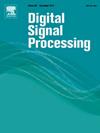Double JPEG compression with forgery detection
IF 2.9
3区 工程技术
Q2 ENGINEERING, ELECTRICAL & ELECTRONIC
引用次数: 0
Abstract
Detecting modified images has become increasingly crucial in combating fake news and protecting people's privacy. This is particularly significant for JPEG images, which are widely used online. Tampering with JPEG images often involves recompression using a different quantization table, which alters the histograms of the original image's discrete cosine transform (DCT) coefficients. This study exploits this double compression effect to propose a novel deep learning model that combines a CNN and a stacked residual bidirectional long short-term memory (Bi-LSTM) model that incorporates self-attention mechanisms. A CNN model is initially used to learn the characteristics of DCT coefficients and quantization tables extracted from JPEG files. Subsequently, these features are fed into a stacked residual Bi-LSTM model with an attention mechanism to effectively capture the data's long-term forward and backward relationships. By leveraging the strengths of these diverse techniques, we construct a deep Bi-LSTM with up to five layers, which achieves superior predictive performance compared to existing methods. Our model demonstrates its potential for the robust detection and localization of JPEG forgery.
求助全文
约1分钟内获得全文
求助全文
来源期刊

Digital Signal Processing
工程技术-工程:电子与电气
CiteScore
5.30
自引率
17.20%
发文量
435
审稿时长
66 days
期刊介绍:
Digital Signal Processing: A Review Journal is one of the oldest and most established journals in the field of signal processing yet it aims to be the most innovative. The Journal invites top quality research articles at the frontiers of research in all aspects of signal processing. Our objective is to provide a platform for the publication of ground-breaking research in signal processing with both academic and industrial appeal.
The journal has a special emphasis on statistical signal processing methodology such as Bayesian signal processing, and encourages articles on emerging applications of signal processing such as:
• big data• machine learning• internet of things• information security• systems biology and computational biology,• financial time series analysis,• autonomous vehicles,• quantum computing,• neuromorphic engineering,• human-computer interaction and intelligent user interfaces,• environmental signal processing,• geophysical signal processing including seismic signal processing,• chemioinformatics and bioinformatics,• audio, visual and performance arts,• disaster management and prevention,• renewable energy,
 求助内容:
求助内容: 应助结果提醒方式:
应助结果提醒方式:


